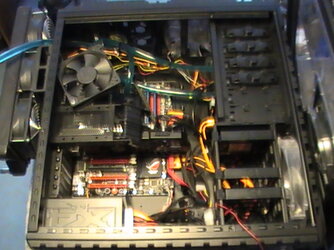I don't follow that logic. From my understanding of the physics of it all (which may not be correct) that makes no sense. There is nothing you can do about quick spikes. The heat doesn't transfer fast enough from the die to the IHS, through the TIM, and through the block to the water. Faster flowing water won't do anything because it is not what would prevent the spikes from happening. We already know from Skinee's/Martin's testing that 1-1.5GPM is the best and there are severely diminishing returns after that point. Only so much heat can transfer so quickly through all those mediums. Am I thinking about it wrong? Thanks for further explanation.No, it won't make it much if any cooler BUT it will help to stabilize temps/control temp spikes under load
I am working with over 700W to dissipate in a loop of mine... one of which is a 500W part (R9 295x2). That said, I roll with 5x120mm total rads (2x120 is a double thickness) to dissipate that load. After the loop gets saturated, the GPU(s) max out at ~60C while the CPU (5820K @ 4.2-4.8GHz) hits 70C at the high end clocks (this is looping Heaven and running AIDA on the CPU). He doesn't have that much more to dissipate really... 300W CPU, 500W GPUs, and 50W chipset. Let's round up and say 900W worst case, that Phoyba should handle it, no? I do agree with rather have more than less, but...seems there is enough?
Last edited:
 , I meant the amount of spike related to how high it gets when it does spike is better controlled as in these spikes aren't as severe when they top out. I agree you can't "Stop" these spikes so you have to deal with them as they occur.
, I meant the amount of spike related to how high it gets when it does spike is better controlled as in these spikes aren't as severe when they top out. I agree you can't "Stop" these spikes so you have to deal with them as they occur.  There's also a limit to how much a given amount or volume of water can take on related to heat, thats why it has to be moving.
There's also a limit to how much a given amount or volume of water can take on related to heat, thats why it has to be moving. 